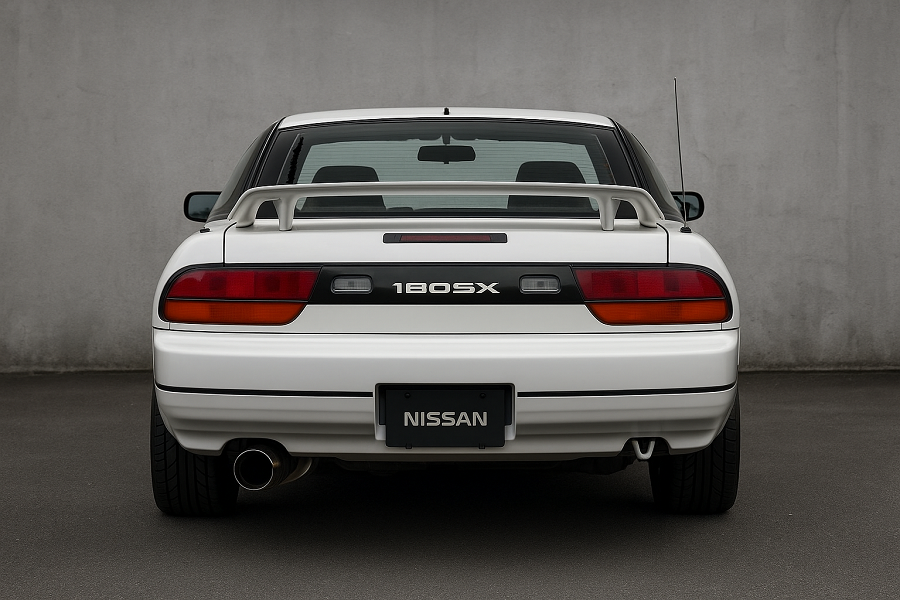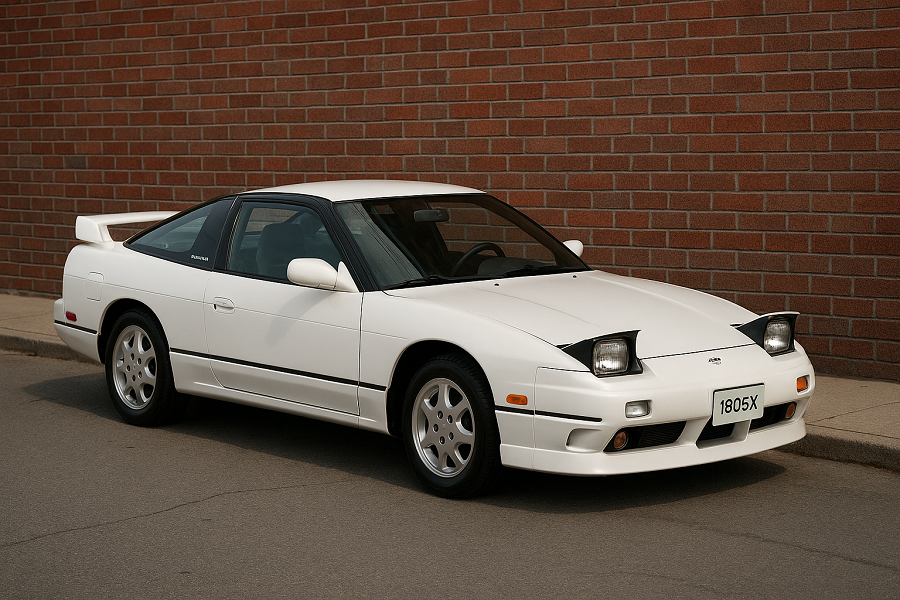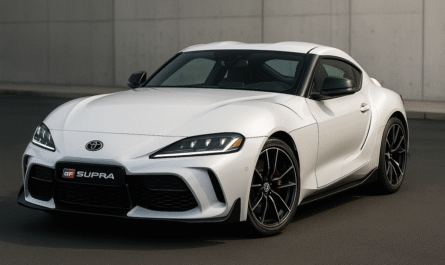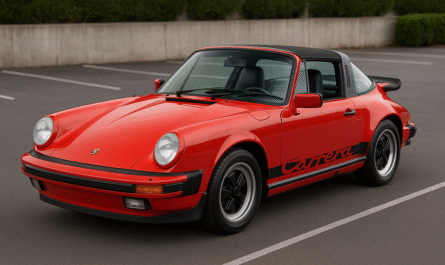Table of Contents
Table of Contents
The Nissan 180SX is more than just a car; it’s a cultural phenomenon that described the Japanese Domestic Market (JDM) scene in the 1990s and continues to captivate car lovers worldwide. With its elegant fastback design, pop-up headlights, and turbocharged performance, the 180SX became a staple in drifting, street racing, and pop culture. Whether you’re a gearhead dreaming of sliding through corners or a collector hunting for a piece of automotive history, the 180SX has a story that resonates. In this article, we’ll dive deep into the history, design, performance, and enduring legacy of the Nissan 180SX, exploring why it remains a beloved icon in the car world.
Brief History of the Nissan 180SX
The Nissan 180SX hit the Japanese market in 1989, built on the S13 chassis as a sibling to the Nissan Silvia. While the Silvia was sold at Nissan Prince Store dealerships, the 180SX was offered at Nissan Bluebird Store locations, replacing the Gazelle. Its name originally referred to the 1.8-liter CA18DET engine, though later models adopted the more powerful 2.0-liter SR20DET, keeping the 180SX badge despite the larger displacement.
Production ran from 1989 to 1998, outlasting the S13 Silvia, which was discontinued in 1993. The 180SX’s popularity, especially among drifters and tuners, convinced Nissan to keep it in production alongside the next-generation Silvia (S14). Exported as the 200SX in Europe and 240SX in North America, the nissan 180sx for sale was a Japan-exclusive model in its purest form, making it a coveted JDM gem today.
Key Milestones
- 1989: Launched with the CA18DET engine and pop-up headlights, distinct from the Silvia’s notchback coupe design.
- 1991: Upgraded to the SR20DET engine, boosting power and reliability.
- 1996: Introduced the Type X trim with aggressive styling, cementing its iconic status.
- 1998: Production ended, but its legacy grew through drifting and pop culture.
Design and Exterior Features
The Nissan 180SX’s design is instantly recognizable, blending aerodynamic efficiency with a playful, aggressive stance. Its fastback silhouette and pop-up headlights gave it a unique identity compared to the Silvia’s fixed-headlight coupe. The car’s low-slung profile and lightweight chassis (around 2,700 lbs) made it a favorite for performance driving.
Exterior Highlights
- Pop-Up Headlights: A hallmark of 1980s and 1990s sports cars, adding retro charm and aerodynamic flow.
- Fastback Roofline: The sleek, sloping rear with a liftgate offered practicality and style.
- Aerodynamic Body: Achieved a drag coefficient (Cd) of 0.3, enhancing stability at high speeds.
- Type X Body Kit: Later models featured aggressive bumpers, side skirts, and rear spoilers, amplifying its sporty look.
The 180SX evolved through three major iterations—Zenki (early), Chuki (middle), and Kouki (late)—each with distinct styling updates. The Kouki models, especially the nissan 180sx type x, are the most sought-after for their bold aero kits and modernized tail lights.
Interior Overview
Inside, the 180SX prioritized driver engagement over luxury. Its minimalist cabin focused on functionality, with a driver-centric cockpit that put controls within easy reach. While not as plush as modern sports cars, the interior offered enough comfort for daily driving while keeping the focus on performance.
Interior Features
- Bucket Seats: Supportive seats provided lateral grip during spirited driving.
- Analog Gauges: Clear displays for speed, RPM, and boost pressure kept drivers informed.
- Ergonomic Layout: Controls were intuitively placed for quick access during high-speed maneuvers.
- Optional Amenities: Air conditioning, power windows, and a 2+2 seating option added practicality.
The Type X models introduced slight interior upgrades, like improved materials and a more modern dashboard, but the 180SX remained a no-frills performance machine at heart.
Performance and Engine Options
The 180SX’s performance credentials made it a legend. Its rear-wheel-drive layout, balanced weight distribution (near 50:50), and lightweight chassis created a nimble platform ideal for drifting and track racing. Two main engines powered the 180SX during its production run.
Engine Breakdown
- CA18DET (1989–1991):
- Type: 1.8L turbocharged inline-four, DOHC
- Power: 167 hp at 6,400 rpm
- Torque: 166 lb-ft at 4,000 rpm
- Characteristics: Lightweight and rev-happy, but less robust than its successor.
- SR20DET (1991–1998):
- Type: 2.0L turbocharged inline-four, DOHC
- Power: 202–205 hp at 6,000 rpm
- Torque: 203 lb-ft at 4,000 rpm
- Characteristics: Reliable, tunable, and a favorite among drifters for its torque delivery.
The SR20DET, especially the later “Blacktop” version, became the gold standard for JDM enthusiasts due to its durability and tuning potential. Paired with a 5-speed manual or 4-speed automatic transmission, the 180SX could hit 0–60 mph in around 6.7 seconds (CA18DET) to 6.5 seconds (SR20DET) and reach top speeds of up to 137 mph.
Suspension and Handling
- MacPherson Strut Front: Provided sharp steering response.
- Multi-Link Rear: Improved cornering stability and grip.
- HICAS-II (Optional): Four-wheel steering enhanced high-speed handling.
- Limited-Slip Differential (LSD): Improved traction for drifting and cornering.
The nissan 180sx price chassis was a tuner’s dream, easily upgraded with coilovers, sway bars, and reinforced components for superior handling.
Trims and Variants
The 180SX came in several trims, evolving over its production run to meet market demands and performance trends. Here’s a breakdown of the key variants:
- Type I (1989–1991): Base model with the CA18DET engine, basic styling, and minimal features.
- Type II (1989–1991): Added HICAS-II, upgraded brakes, and slight cosmetic enhancements.
- Type X (1994–1998): Premium trim with aggressive body kits, modernized interior, and SR20DET engine.
- Type S (1996–1998): Budget-friendly option with the naturally aspirated SR20DE engine (140 hp).
- Type R (1994–1998): Performance-focused with the SR20DET but fewer cosmetic upgrades than Type X.
The Type X is the most coveted today, thanks to its factory aero kit and iconic styling, often fetching premium prices in the collector market.
Popular Modifications and Tuning Culture
The 180SX’s tuning potential is legendary, making it a cornerstone of JDM modification culture. Its lightweight chassis and robust engines, especially the SR20DET, are perfect for performance upgrades. The car’s prominence in drifting, street racing, and pop culture (like Initial D and Need for Speed) cemented its status as a tuner’s paradise.
Common Modifications
- Turbo Upgrades: Larger turbos (e.g., Garrett T28) can push the SR20DET to 300–500 hp.
- Coilover Suspension: Adjustable coilovers improve handling and stance.
- Exhaust Systems: Aftermarket exhausts enhance sound and power.
- ECU Tuning: Performance chips or standalone ECUs optimize fuel and boost settings.
- Body Kits: Rocket Bunny, Origin Lab, and 6666 Customs kits add aggressive styling.
- Sileighty Conversion: Swapping the 180SX’s front end with a Silvia’s creates the iconic Sileighty.
The Sileighty, a hybrid of the 180SX body and Silvia front end, was popularized by the tuning company Kid’s Heart, which produced 500 official units. This mod became a cultural icon, especially in drifting.
Drifting Legacy
The 180SX’s balanced chassis and rear-wheel-drive setup made it a favorite in the D1 Grand Prix and other drifting competitions. Drivers like Masato Kawabata and Kazuya Matsukawa used 180SXs to showcase their skills, proving the car’s prowess on the track.
Nissan 180SX vs. Silvia – Key Differences
The 180SX and Silvia share the S13 chassis but differ in design and purpose. Here’s a comparison to clarify their distinctions:
| Feature | Nissan 180SX | Nissan Silvia (S13) |
|---|---|---|
| Body Style | Fastback hatchback with pop-up headlights | Notchback coupe with fixed headlights |
| Engine Options | CA18DET (1.8L turbo), SR20DET (2.0L turbo), SR20DE (2.0L NA) | CA18DE (1.8L NA), CA18DET, SR20DE, SR20DET |
| Market Availability | Japan-exclusive (exported as 200SX/240SX) | Japan and limited exports |
| Rear Design | Liftgate for practicality | Fixed trunk, less versatile |
| Tuning Popularity | Dominant in drifting | Popular for grip racing and street builds |
| Collector Value | Higher due to JDM exclusivity and Type X | Slightly lower, but still desirable |
The 180SX’s hatchback design and pop-up headlights give it a slight edge in style and practicality, while the Silvia appeals to those preferring a classic coupe look.

Reasons Why the 180SX is a JDM Icon
The Nissan 180SX’s enduring popularity stems from its unique blend of style, performance, and cultural impact. Here’s why it remains a JDM legend:
- Drift King: Its balanced chassis and tunable engines made it a go-to for professional and amateur drifters.
- Pop Culture Star: Featured in Initial D (driven by Kenji), Gran Turismo, Need for Speed, and Fast & Furious, boosting its global fame.
- Timeless Design: Pop-up headlights and a fastback silhouette scream 1990s cool.
- Tuning Potential: The SR20DET can handle massive power upgrades, from 300 hp to over 500 hp with the right mods.
- JDM Exclusivity: Never sold in the U.S. as the 180SX, making clean imports highly desirable.
Pros and Cons
Pros
- Lightweight chassis for agile handling
- Robust SR20DET engine with huge tuning potential
- Iconic pop-up headlights and fastback design
- Affordable entry into JDM ownership (relative to other classics)
- Strong aftermarket support for parts and mods
Cons
- Rust issues on older models, especially in humid climates
- High-mileage examples may need extensive maintenance
- Limited interior comfort compared to modern cars
- Rising prices for clean, unmodified examples
- Import restrictions in some countries (e.g., U.S. 25-year rule)
Current Market Value & Collector Appeal
The Nissan 180SX’s value has skyrocketed in recent years due to the JDM import boom and its status as a collector’s car. Clean, unmodified examples, especially Type X models, are increasingly rare. Prices typically range from $15,000 to $40,000, with pristine Type X variants fetching over $50,000 in some cases. Factors like low mileage, original condition, and desirable trims (e.g., Kouki Type X) drive up costs.
Collector Tips
- Seek Original Examples: Unmodified cars hold more value than heavily modded ones.
- Check for Rust: Common in wheel wells and undercarriage, especially in older models.
- Verify Provenance: JDM imports with documented history command higher prices.
- Type X Premium: Kouki Type X models are the most sought-after for their styling and rarity.
The 180SX’s appeal extends beyond collectors to enthusiasts who value its driving dynamics and cultural significance. Its role in drifting and media keeps demand strong, ensuring its status as a future classic.
Ownership Experience and Maintenance Tips
Owning a Nissan 180SX is a rewarding but demanding experience. Its age and performance-oriented design require diligent maintenance, especially for high-mileage or modified examples.
Maintenance Tips
- Engine Care: Regularly check the SR20DET’s turbo, timing belt, and cooling system to prevent overheating or boost issues.
- Rust Prevention: Inspect and treat rust-prone areas like the chassis and wheel arches.
- Suspension Upgrades: Replace worn bushings and consider coilovers for better handling.
- Sourcing Parts: Use reputable JDM importers or aftermarket suppliers like Enjuku Racing or Driftworks.
- Community Support: Join forums like Nico Club or 180SX Club for advice and resources.
Daily driving is possible with proper care, but many owners reserve their 180SXs for weekend cruises or track days to preserve their condition.
Conclusion
The Nissan 180SX is a JDM icon that blends style, performance, and cultural significance into a package that’s hard to beat. From its pop-up headlights and fastback design to its tunable SR20DET engine, it’s a car that resonates with enthusiasts and collectors alike. Whether you’re drawn to its drifting pedigree, its role in pop culture, or its timeless appeal, the 180SX offers a driving experience that’s raw, engaging, and unmistakably fun. As prices climb and clean examples become rarer, now is the time to grab a piece of JDM history before it becomes unattainable.
FAQs about Nissan 180SX
1. What is the difference between the Nissan 180SX and 240SX?
The 180SX was sold in Japan with turbocharged CA18DET or SR20DET engines, while the 240SX, sold in North America, used a naturally aspirated 2.4L KA24DE engine. The 240SX also came in coupe and convertible variants, while the 180SX was strictly a fastback hatchback.
2. Why is the 180SX so popular for drifting?
Its lightweight chassis, rear-wheel-drive layout, and near-perfect weight distribution make it ideal for drifting. The SR20DET engine’s tuning potential also allows for significant power upgrades, perfect for sliding through corners.
3. How much does a Nissan 180SX cost in 2025?
Prices vary, but expect to pay $15,000–$40,000 for a decent example. Pristine Type X models can exceed $50,000, especially low-mileage, unmodified cars.
4. What is a Sileighty?
A Sileighty is a 180SX with the front end (headlights, hood, bumper) swapped from an S13 Silvia. It was popularized by the tuning company Kid’s Heart, which produced 500 official units, and became a drifting icon.
5. Is the Nissan 180SX a good investment?
Yes, due to its rising value and JDM exclusivity. Clean, unmodified examples, especially Type X, are likely to appreciate as supply dwindles and demand grows.
6. Can I daily drive a Nissan 180SX?
With proper maintenance, yes, but its age and performance focus make it better suited for weekend or track use. Rust, wear, and parts availability can be challenges for daily driving.



